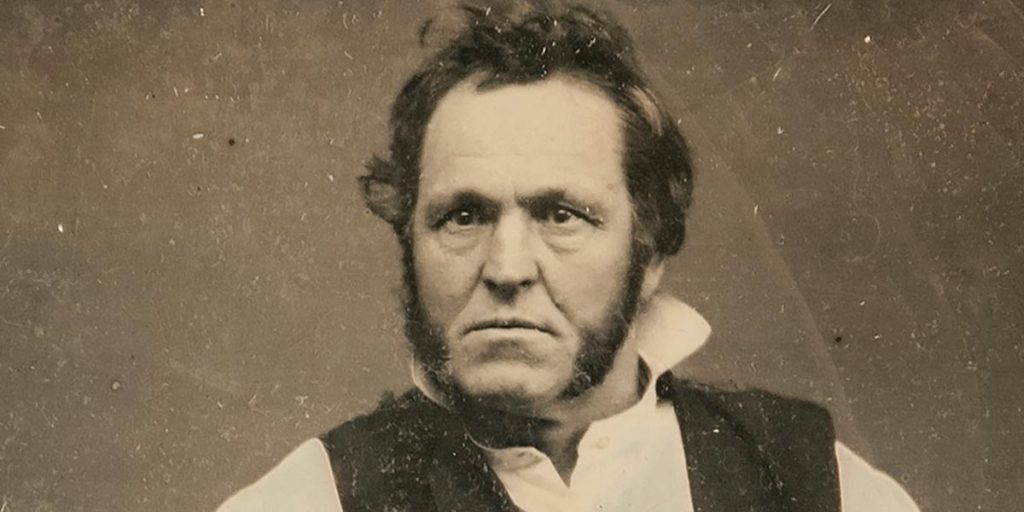19th century inventor, John Deere, sits proudly on top of his plow in this new edition to Middlebury College Museum of Art’s prominent daguerreotype collection. The daguerreotype is being prepped for it’s debut in the museum’s upcoming exhibition, American Faces: A Cultural History of Portraiture and Identity, on view February 17 – April 30, 2017, curated by Richard Saunders.

American Faces invites us beyond the “lens” and introduces the viewer to the subject. Through the many faces appearing in the exhibit, Saunders provides a sociological perspective for the evolution of portraiture in America.
The daguerreotype above is a symbol of the inseverable nature between one’s trade and sense of self during the 1800s, reflecting America’s economic expansion. Commonly referred to as an occupational portrait, large numbers of individuals became interested in portraying items from their professions as they sat for a photographer (Saunders, 2016*).
Deere’s career began in Middlebury where he served as an apprentice for Benjamin Lawrence, a local blacksmith. He became skilled in smithing ironwork for wagons, stagecoaches and farm tools. It was not until his adulthood that Deere relocated to Illinois and donned the cap of inventor for building the iconic and, literally, groundbreaking steel moldboard plow.
“He considered himself a tinkerer rather than an inventor, and while gruff and tight-lipped, he enjoyed personally testing his creations and readily adopted suggestions for improvement.”
– Bates, 2015, The Early Republic and Antebellum America: An Encyclopedia of Social, Political, Cultural, and Economic History, pp. 288.
To an extent, the term “tinkerer” was true in the fact that the invention of the plow had been around for hundreds of years. Many names contributed to the design that lead up to Deere’s model.
In 1788, Thomas Jefferson became focused on redesigning the moldboard plow to require less effort to cut through the soil. His work allowed easy duplication and manufacturing of wooden moldboards, and he even began to cast them out of steel. Deere’s design, however, became popular among local farmers in the Midwest because he polished his steel so smooth that the thick clay-like soil would slide right across the blade. His impact on the plow manufacturing scene riveted across the country due to his craftsmanship, hardworking mentality and devotion to his business; characteristics that were highly valued in 19th century America.
200 years later, Deere’s brand has out shadowed many of his rivals and is widely known. This occupational portrait hangs as a gripping presentiment of one man’s rise to fame. Today, the blacksmith shop of Benjamin Lawrence no longer stands, however, a marker commemorates the area in downtown Middlebury where John Deere learned his trade.

* Saunders, Richard H. American Faces: A Cultural History of Portraiture and Identity. Hanover, NH: University Press of New England, 2016.
